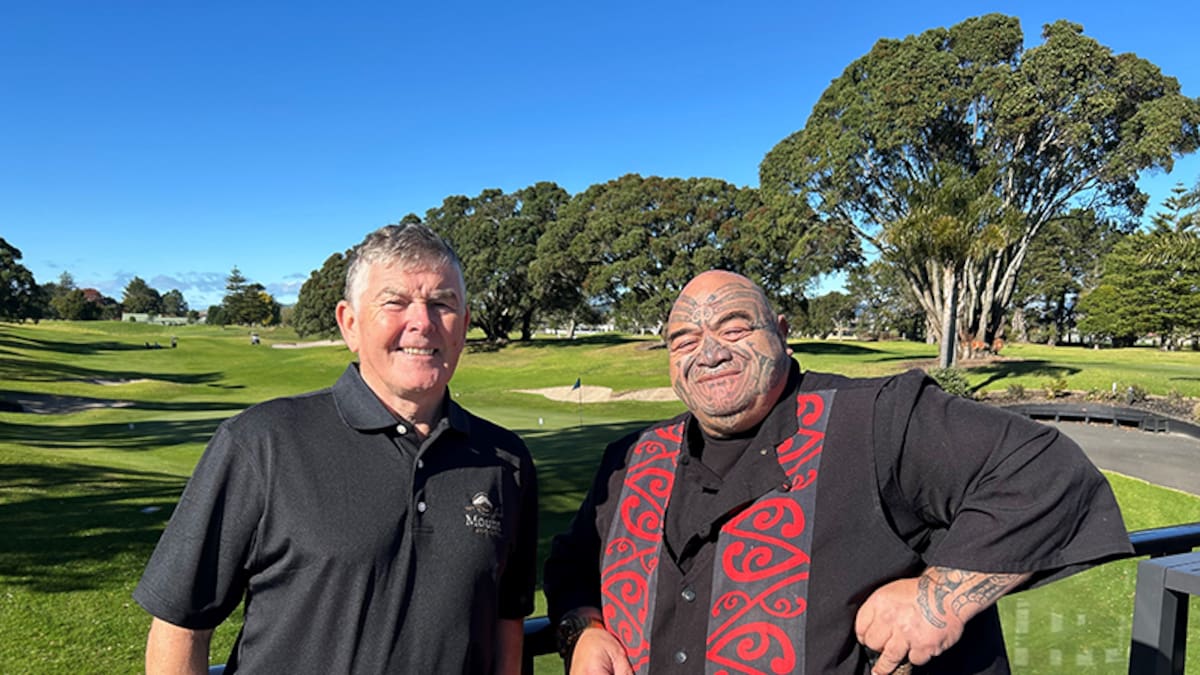Seventh hole at the Mount Maunganui Golf Club.
After engaging with an environmental consultant a few months ago, it was found some of the other pōhutukawa trees were showing potential signs of myrtle rust.
Through these discussions, the club formed a relationship with the hapū, which has given the club its blessing to fell three pōhutukawa sooner rather than later, as these younger trees – no more than 50 years old – were more susceptible to myrtle rust.
Hayden Henry, a representative of Ngai Tukairangi, said as kaitiaki (guardians) of the land it was their responsibility to protect the pōhutukawa.
AdvertisementAdvertise with NZME.
“It is our tupuna (ancestor). The reality is, get rid of it now during the winter when the spores are not active or risk losing the trees anyway. Because once it spreads, it spreads,” Henry said.
“If myrtle rust infects new growth the genes will no longer be pure. Collecting the seeds from the trees that are not infected now will help sustain and maintain the DNA for the future.”
Henry, who is also chairman of the Tauranga Moana Biosecurity Council Māori Caucus, said they were working with the golf club to determine exactly how many pōhutukawa may be infected and to develop a management strategy of how to assess, monitor and contain the disease.
“We are not going to please everybody, but it has brought other agencies together to sit down and make a plan to go forward.
“It is about kotahitanga – working together and whanaungatanga (kinship).”
Henry said the rākau (trees) were also used for rongoā (medicinal) and whakairo (Māori carving) and could be repurposed easily. The club had offered the wood to the hapū for reuse and seeds would be collected at the time of felling.
It is intended the club will plant about 20,000 other native plants, shrubs, and trees on the golf course. Some smaller trees will be saved and transplanted to realign some holes away from the boundaries.
Phil Tataurangi. Photo / Photosport
“It is about reinstalling some other native plantings back to the korowai of papatūānuku. We are returning it back to the land,” Henry said.
“It is a win-win.”
Williams said the club had formed a close relationship with Ngai Tukairangi and Tauranga Moana Biosecurity Council Māori Caucus to be able to monitor the situation.
AdvertisementAdvertise with NZME.
“Having these close relationships means the club identifies myrtle rust as a key issue and we are trying to get ahead of that.”
He said the club also recognised pōhutukawa as a treasured taonga, which was why it was important to have the hapū’s blessing to fell the three trees.
The club had received feedback from members and neighbouring residents and acknowledged the removal of the trees was a sensitive issue, he said.
“But ultimately, with health and safety as the key priority, this is the right and pragmatic decision to protect everyone’s safety.”
– SunLive







